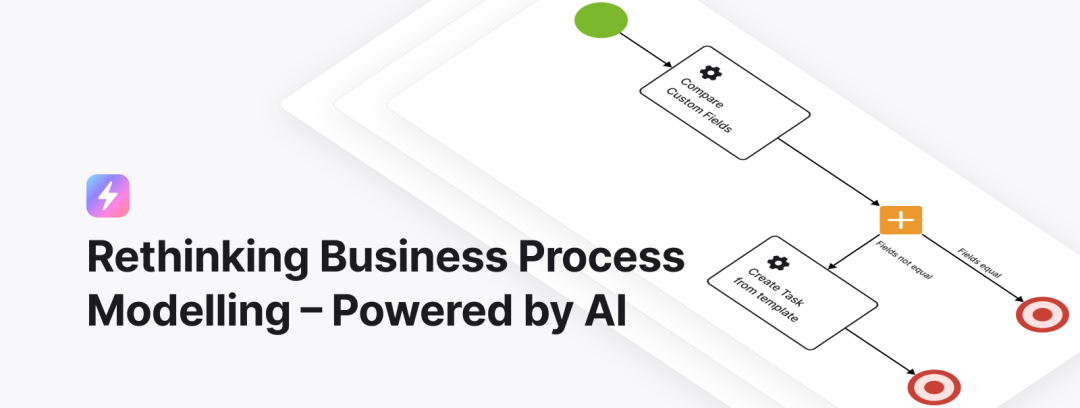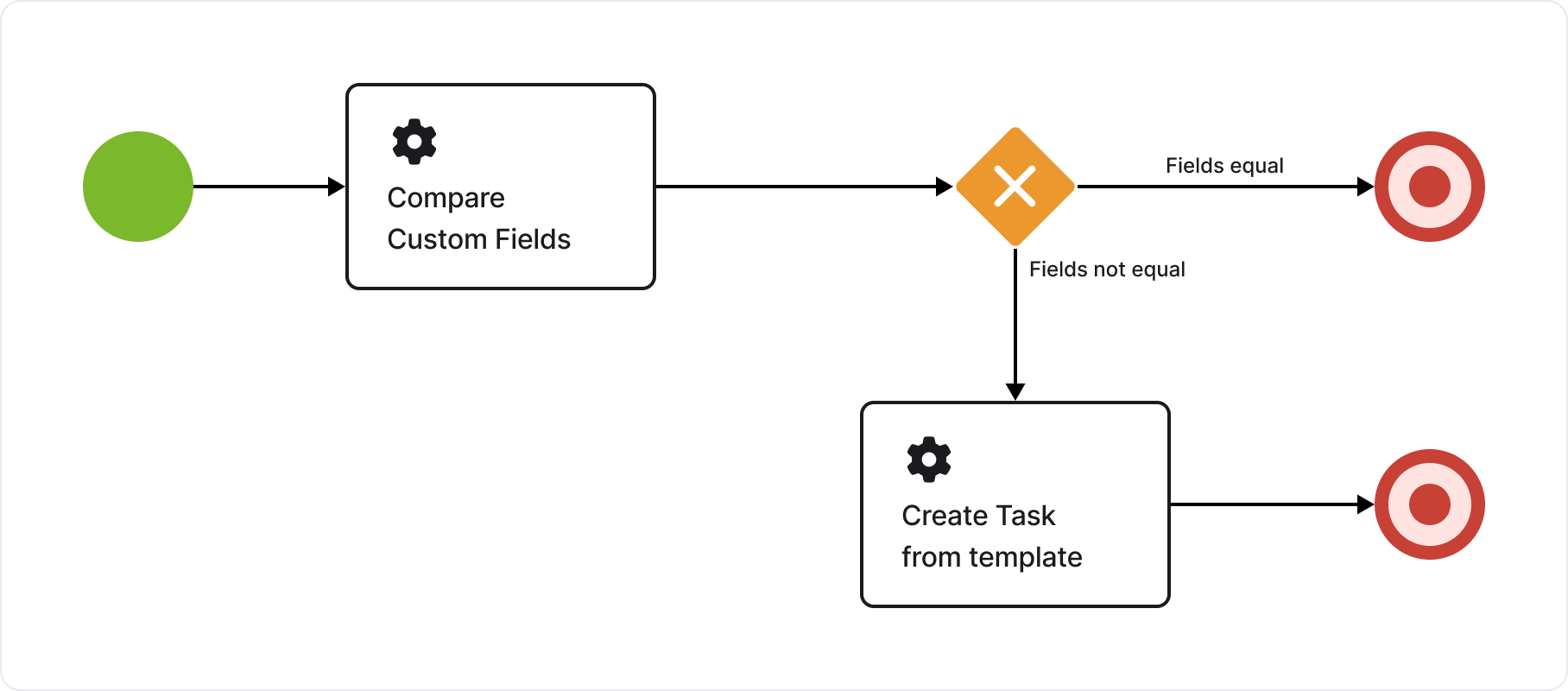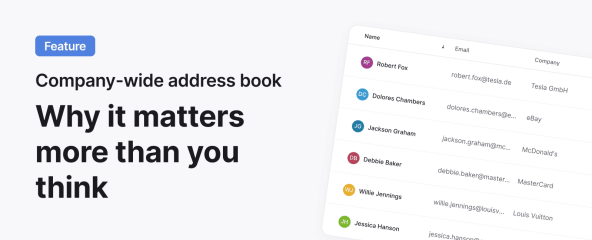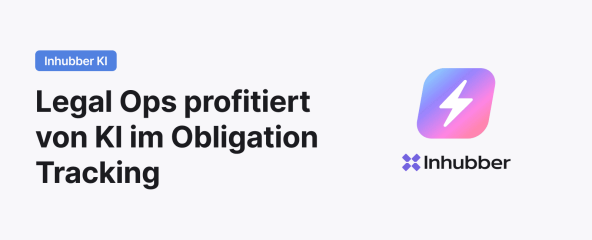
Interview with Andre Sokolov, CTO at Inhubber
In today’s dynamic enterprise landscape, organizations are constantly seeking more intelligent, efficient, and consistent methods to manage contractual obligations and ensure operational alignment. One of the most powerful—yet often overlooked—tools at their disposal is AI-powered business process modelling (BPM) integrated with contract lifecycle management (CLM).
At Inhubber, we’ve taken business process modelling a step further by embedding generative AI models and real-time plan-versus-fact comparisons directly into our contract management platform. This empowers CFOs, legal departments, procurement teams, and project managers to move beyond passive contract archives into a world of dynamic, insight-driven contract execution. More importantly, by combining these AI capabilities with configurable automation, we enable organizations to implement customer-specific workflows and processes in a low-code environment—reducing development time and boosting agility.
Let’s explore how this works, what measurable benefits it brings, and how a real-world example from the food service and manufacturing industry illustrates the transformation.
What is business process modelling in contract management?
Business process modelling (BPM) is the practice of mapping out workflows, tasks, and interactions involved in a business operation to identify inefficiencies, enforce compliance, and improve outcomes. When applied to contract management, BPM helps companies define and monitor every stage of a contract’s lifecycle—from negotiation to renewal or termination. It also enhances the scalability, traceability, and transparency of these processes, ensuring better control and collaboration across departments.
But where traditional BPM ends, AI-powered process modelling begins.
With the integration of AI, we can:
- Interpret contract clauses in near-real time
- Compare planned vs. actual performance metrics
- Trigger automated workflows such as tasks, reminders, or alerts
- Generate compliance reports and policy documents based on templates
- Predict risks and propose remediation actions
“The next evolution of contract management is process-aware and self-optimizing. With generative AI, every contract becomes a living, actionable asset.” – Andre Sokolov, CTO at Inhubber.
The value of AI components in BPM
Artificial intelligence adds a powerful layer to business process modelling, especially when it comes to data processing, contextual analysis, and workflow orchestration. However, it’s essential to clarify the current capabilities and the architectural logic behind these enhancements, particularly in systems like Inhubber that combine AI with event-driven BPMN processes.
1. Data extraction and normalization
At the core of AI’s contribution lies its ability to extract structured data from unstructured documents. Inhubber’s AI modules currently specialize in identifying and capturing key contract elements—such as payment terms, delivery milestones, and penalty clauses. This structured data provides the basis for downstream analysis and plan-versus-fact monitoring when integrated with ERP, finance, or operational systems.
2. Plan-fact comparison (with BPMN logic)
While the AI enables advanced data capture, the actual comparison between planned and actual performance is driven by configured logic within customizable BPMN workflows. AI supports this process by delivering clean, structured inputs, while the system’s event engine executes business logic, such as checking for SLA violations or payment delays. Triggering actions based on these insights—like alerts or escalations—is not handled autonomously by AI, but through defined process models tailored for each organization.
3. Post-contract automation (via BPMN, not AI)
Automated responses to contract deviations—such as creating audit tasks, notifying stakeholders, or sending signature requests—are managed through Inhubber’s flexible event system and BPMN engine. While AI can eventually evolve into a decision-support assistant, today it operates primarily as a data processor. Any downstream automation is activated only if configured for a given customer scenario, ensuring full control and traceability.
4. Generative AI for document creation (coming soon)
This is the area where AI shows the most promise for autonomous functionality. Inhubber is actively developing generative AI capabilities that will allow organizations to create documents based on predefined templates and contextual data. Soon, users will be able to generate audit logs, compliance reports, policy updates, and addenda automatically—reducing legal overhead and standardizing documentation across departments.
By combining AI-powered extraction with configurable BPMN workflows, Inhubber provides a highly scalable and transparent approach to contract lifecycle automation—while staying grounded in operational reality. As AI agents mature, more autonomy will be introduced step by step, always with a focus on traceability, control, and customer-specific needs.
Real-world case: Plan-to-pay verification for an Inhubber customer in the food service industry
A leading European food service and manufacturing company—an enterprise customer of Inhubber—faced a common yet complex challenge: how to scale and streamline verification of supplier payments in alignment with contract terms across hundreds of contracts.
The Challenge
Each supplier contract involved conditional, multi-phase payment terms linked to delivery volumes, specific timeframes, and performance milestones. The manual process of cross-checking these clauses against ERP payment records had become:
- Cumbersome and time-consuming (up to three weeks per cycle)
- Error-prone, especially during seasonal surges
- Unsustainable as the supplier base expanded
Inhubber’s intelligent process integration
Inhubber provided a hybrid solution that combines AI-powered data extraction with customizable BPMN-based logic and event-driven automation. Key components included:
AI-driven extraction of payment terms: from PDF contracts (e.g., “€100,000 due on June 1 upon delivery of 5,000 units”)
Deviation detection: through automated rule checks—identifying delays, underpayments, or missing delivery confirmations
Task generation via BPMN: upon detecting a discrepancy, the system created audit or follow-up tasks, depending on customer-specific configuration
(Planned/future feature): Advanced AI capabilities—such as automated matching of ERP data to contract terms and generation of compliance dashboards—are currently under development as part of our AI assistant/agent roadmap.
As a result, the company achieved a 60% reduction in reconciliation cycle time and reached 97% accuracy in detecting contractual discrepancies. This led to a significant decrease in overpayments and late penalties, while also providing enhanced transparency through real-time financial oversight via Inhubber’s integrated dashboard.
“This is where intelligent automation pays off—not by replacing humans, but by surfacing risks earlier, aligning data sources, and enabling CFOs to act with confidence.” — Andre Sokolov, CTO at Inhubber.
Ai-driven process modelling: A new standard for CFOs
Today’s CFOs aren’t just managing numbers – they’re managing trust, compliance, and efficiency. AI-enhanced BPM becomes an indispensable tool by:
- Automating approval and reconciliation workflows
- Setting alerts based on key thresholds (e.g., payment delays > 10 days)
- Aligning legal, procurement, and finance teams
- Ensuring regulatory and policy compliance
By connecting contracts to real-world outcomes, AI ensures that what is promised is what gets delivered.
Generative AI modules: more than a buzzword
AI doesn’t just detect problems—it proactively generates solutions. For example, when a discrepancy is identified, generative AI can create a draft addendum that is already pre-filled with all relevant deviations. If a new regulatory clause is detected, the system can instantly generate a policy update document. It can also produce quarterly performance summaries for vendors or internal departments, providing a clear overview of contract execution. Additionally, AI can suggest amendment proposals written in natural language that align with legal standards and company preferences. These generative AI features can be offered as optional modules or fully integrated into broader compliance initiatives. Either way, they help transform contracts from static files into living, responsive processes.
Example workflow: intelligent response to plan-fact analysis
Let’s look at an example of an AI-triggered workflow in Inhubber’s platform.
Contract clause: “Payment of €120,000 due on July 1, 2025, upon delivery of 6,000 units.”
ERP Data input: Payment logged: €100,000 on July 3, 2025. Delivery: 5,800 units received.
AI workflow triggered:

| Condition | Result | Action |
| Payment < expected | TRUE | Create task for Finance Audit |
| Delivery < expected | TRUE | Create task for Procurement Follow-up |
| Deviation exists? | TRUE | Block renewal flag; trigger compliance review |
| Plan = Fact? | TRUE | Generate task: “Prepare Renewal Offer” |
“These dynamic workflows allow your contract to react autonomously. If all terms are fulfilled, you get a renewal task. If not, you get an investigation trigger. No delays. No guesswork.” – CTO, Inhubber.
Why business process modelling with AI matters
The integration of artificial intelligence (AI) into business process management (BPM) is more than just a technical enhancement — it’s a strategic shift that redefines how organizations operate.
1. Accuracy
AI eliminates manual errors in matching contracts with factual data, ensuring a higher level of precision and reliability in operations.
2. Speed
By automating reconciliation tasks, AI can reduce process times by up to 80%, accelerating business cycles and freeing up valuable resources.
3. Visibility
Real-time dashboards and AI-driven insights provide unprecedented transparency, allowing decision-makers to monitor processes and performance instantly.
4. Compliance
AI systems proactively flag potential issues before they evolve into regulatory risks, enabling organizations to stay ahead of compliance challenges.
5. Scalability
With AI, companies can handle thousands of contracts simultaneously without the need to expand staff, making growth more sustainable and cost-effective.
6. Proactivity
AI doesn’t just react — it anticipates. It identifies risks and suggests solutions before problems escalate, allowing teams to act strategically rather than defensively.
Final thoughts: AI and BPMN as co-pilots for smarter contract execution
AI-powered business process modelling — especially when implemented through BPMN — doesn’t replace human judgment. It enhances decision-making, ensures traceability, and transforms contracts into active business tools. At Inhubber, we’re building a future where contract execution is continuously monitored, policy-compliant, audit-ready, and capable of self-correcting when deviations occur. By combining generative AI with BPMN-based automation, we help organizations move from static documents to intelligent, responsive workflows.
Ready to explore how AI-powered BPMN workflows can unlock efficiency, compliance, and financial control for your business? Book a demo with Inhubber.





